Hither Came Scott Oden: The Shadow of Vengeance, a Sequel Robert E. Howard SHOULD have Written
Conan: The Shadow of Vengeance (Titan Books, January 30, 2024)
Octavia tore her gaze from the grisly noose. Hope fluttered in her breast, for through the guttering smoke from scores of torches she saw the Cimmerian astride his mighty stallion. He stood motionless, a statue hewn from whalebone and gristle — save for his eyes. Even with the breadth of the Red Brotherhood between them, Octavia recognized the death fires kindled in those cold blue orbs.
There is a magic to some writer’s prose; it pulses and pounds, like Robert E. Howard writing about Conan, or has a clever, articulate subliminity in which a bright man finds himself feeling the fool in a genius’s shadow (Doyle’s Watson writing about Holmes), that infuses a character and their canon.
This is part of what makes pastiche such a tricky business to evaluate and review. Some hate the idea of pastiche, in which case, any review is pointless. On the other hand, pastiche — the continuation of an author’s characters in new adventures is a long-established tradition that reaches back to the tales of the pre-Classical world and continues on the reams of unlicensed fan-fic. So, let’s leave that debate for elsewhere, and just assume that you are this far because you love Robert E. Howard, you love Conan, and you want that pulse-pounding, blood-and-thunder sense of adventure you experienced long ago.
Over the years, you’ve been exposed to a LOT of Conan pastiche. Most was initially by L. Sprague de Camp and Lin Carter, rewriting Howard’s unfinished or unpublished non-Conan stories as Conan stories, to varied affect (come quite good) and then adding a few of their own, most less so (though Carter’s “Thing in the Crypt,” pulled right from the Sagas, is pretty seminal.) In the 80s, the pastiche switched to novel-length stories, mostly penned by Robert Jordan, who could tell a great tale but was better at depicting his collection of recurring characters than Conan, whose character he never quite got and John Maddox Roberts, who certainly did, but mostly used Conan as a vehicle as a way to write homages to other classic pulp tales, from King Solomon’s Mines to The Maltese Falcon, and then a collection of writers, all of varying degrees. Then, there was silence.
Over the last six months, Titan has used its Heroic Legends series to bring Howard’s characters back in new pastiches written by major, established writers, mostly focused on the short story/novelette, again to varying degrees of success. (Starting with a shockingly awful level of promotional support from Titan, who seems more interested in promoting the new Conan comics than the prose line.)
While the writing ability of the pastiche authors is never in doubt, and in some cases (such as the most recent tales by John Hocking or Brian Anderson) the authors get that Conan is as a clever as he is brutal and also, while perhaps not virtuous, has a decided compass of what is tolerably right or wrong. But of these, only Hocking’s tale really has felt both about Conan, and set in Conan’s world, albeit by a new hand.
Until The Shadow of Vengeance, which reads far more like a “posthumous collaboration” than most of those churned out by de Camp and Carter in the 60s and 70s, especially by the time the latter got finished tinkering with Howard’s prose.
Very, very few pastiche writers can mimic the original author’s voice, and most fail terribly when they do. Robert E. Howard is particularly tricky, both as his style is at once contemporary and yet also filled with flourishes and 1920s-30s stylings that seem archaic, even purple, to modern readers; a unique fusion that was unique in the 1930s and gives his fiction such long legs. It’s a raw kind of writing, perfect for the subject matter, but most writers sound… well… cheesy… trying to mimic it.
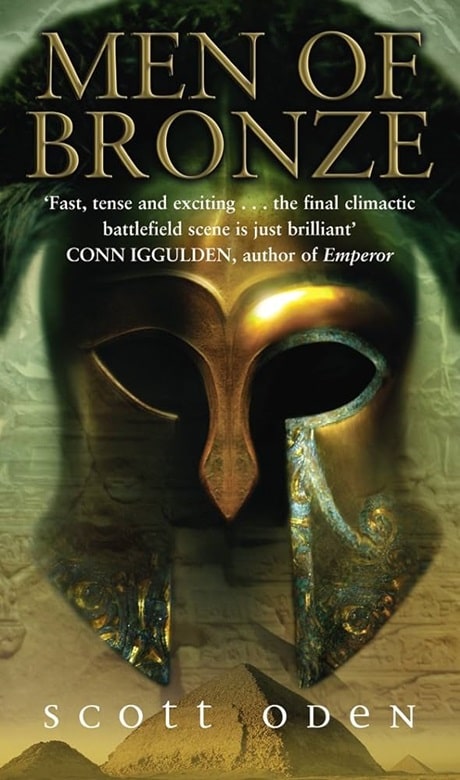 |
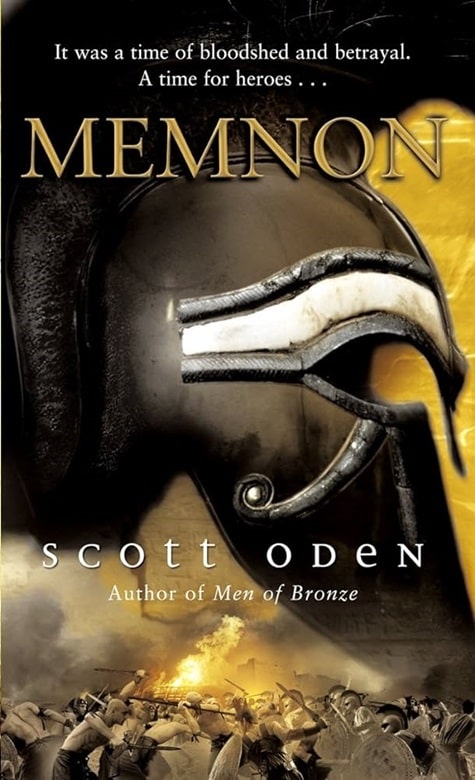 |
Men of Bronze (Bantam UK, August 1, 2006) and Memnon (Bantam UK, July 1, 2007)
But not Scott Oden.
Oden is an accomplished writer of densely plotted historical fiction, of exactly the sort that inspired Howard (see Men of Bronze and Memnon) and has more recently written fantasy in “the northern matter” that he himself would say sits somewhere between Howard and Tolkien (A Gathering of Ravens, Twilight of the Gods, and The Doom of Odin), who has a powerful, unique voice of his own.
But somehow, when writing Conan, he takes up his author’s voice in a way that no one else ever has in the nearly ninety years since Howard’s death, and dozens upon dozens of pastiche that have ensued. Oden writes like Howard, he understands Howard’s character, his motivations and his world. Simply put, this was one of the few times that I was reading a pastiche, and though I knew that, it didn’t feel like I was reading a pastiche at all.
Don’t believe me? There’s a reason I didn’t identify the quote at the top of this page. That is not Robert E. Howard; it’s Scott Oden. Here’s Howard:
He stood silently facing the dark towers that loomed through the trees, his eyes slits of blue balefire. Desire for the yellow-haired woman vied with a sullen, primordial rage at whoever had taken her. His human passion fought down his ultra-human fears, and dropping into the stalking crouch of a hunting panther, he glided toward the walls, taking advantage of the dense foliage to escape detection from the battlements.
You feel that tension of Conan the barbarian, confronting the hyper-civilized, in this case, supernatural, and it emphasizes that whatever potency his foes might have in magical or technological might, they lack in a raw power of the self; Conan embodying much of the naturalism that infused ‘mainstream’ literati that bracketed his lifetime, from Jack London to Hemingway.
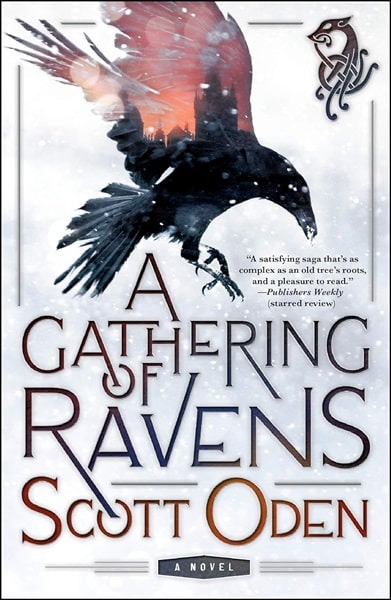 |
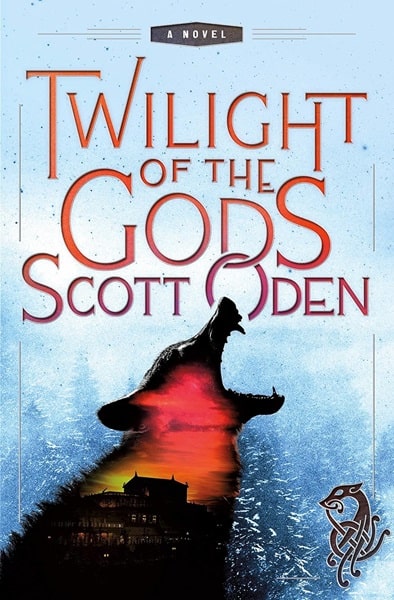 |
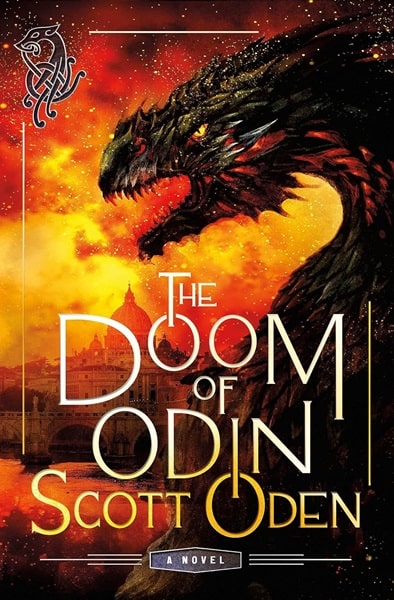 |
A Gathering of Ravens (2017), Twilight of the Gods (2020), and The Doom of Odin
(Thomas Dunne/St. Martin’s Press, June 2017, February 2020, and December 2023)
He does this with lush writing that always comes just to the edge of too much, and it is easy to go over that edge. Most of the better Howard pastiche writers simply decided not to try and focus on getting the pacing and characterization right, rather than the wordplay. Oden decides to throwdown fully, however, and the results are as bold as a Brythunian dancer looking for coin:
It was the clank of chains that drew Conan from the dark borders of oblivion; his brain registered the rasp of iron followed by the wheezing of damp lungs. But he did not wake as a civilized man might, groggy and unaware of his surroundings. No, when the Cimmerian came awake, it was abrupt and total. He knew by the creak of timbers, by the reek of bilgewater and by his body’s gentle rise and fall that he was in the belly of a ship, likely riding its anchor in the sheltered cove of Djerda. And he knew he was not alone.
A bit more restrained, in fitting with modern writing, but not by much, and few modern writers would have dared, or pulled off, prose like:
Conan recognized them by the style of their fighting. Unlike the Red Brotherhood, the Sicari did not swarm in with blades flashing and curses poised upon their lips; rather, they came upon him crab-wise, with a sureness of footing and economy of motion that spoke to a long association with Death. These were veterans of Turan’s endless wars of conquest; a killer elite pledged to the Yellow Hand of Death, as the Hyrkanians named Erlik. Even so, the Sicari could not withstand the Cimmerian’s berserk fury. Death might have been their master, but neither god nor man could master this wolf of the North. His god was Crom, grim and savage, who gave a man the power to strive and slay and little else. And when he called upon Crom, it was not in prayer or benediction… it was so the Dark Lord of the Mound might bear witness.
“Crom, count the dead!” Conan roared, hammering into the Sicari with steel and iron, and leaving three corpses in his wake.
So, simply put, The Shadow of Vengeance is that rarest of things: a pastiche that will make you feel like you are reading Robert E. Howard again. But as a story, is it any good?
Yes, and considering where it fits in relation to cannon, perhaps better than it should be.
The story is a continuation to “The Devil in Iron,” hardly one of my (or anyone’s) favorites of the original Conan stories, other than it introduces one of his more charming sidekicks, the escaped noble woman-turned-harem-slave Olivia. In Shadow Conan and Olivia are back, some months have passed, and Conan is leader of a band of kozaki raiders. Ever ambitious, Conan has hatched a complex plan that involves allying several bands of kozaki with the pirates of the Red Brotherhood to capture a Turanian frontier port, thereby establishing a free-city and safe haven for land-raider and sea-wolf alike.
Unfortunately for Conan, Olivia’s former master, the Agha, may be dead, but his vizier wants vengeance and has enlisted the cult of Nine Sicari to achieve it for him…
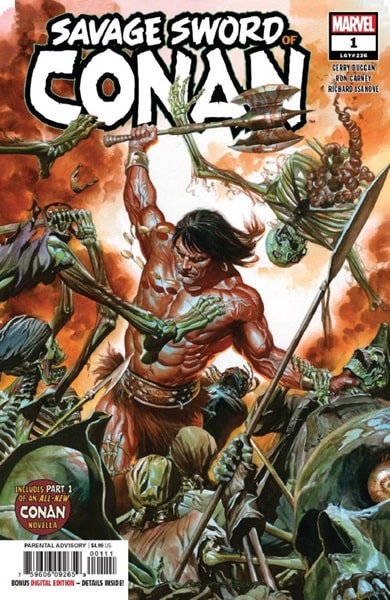 |
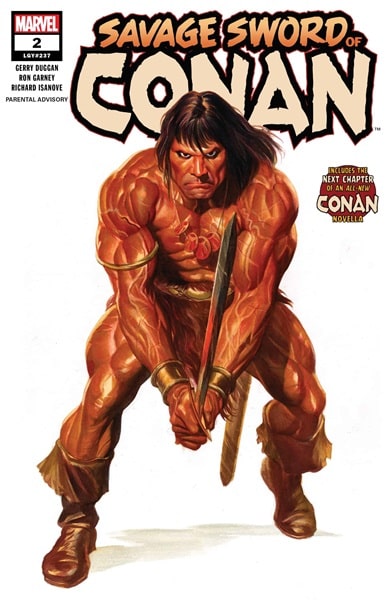 |
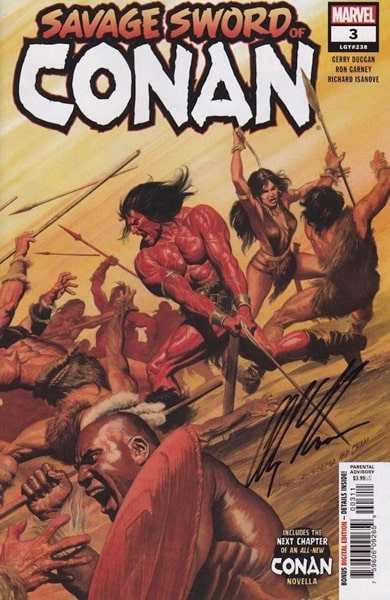 |
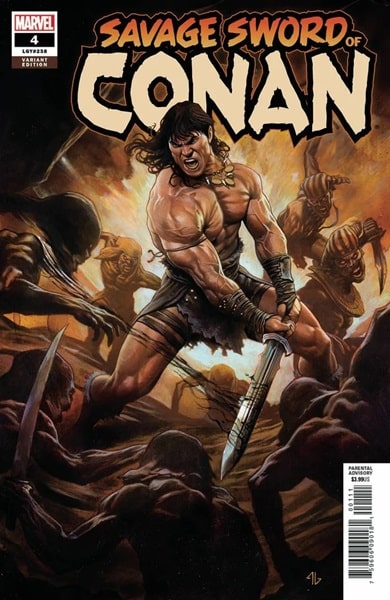 |
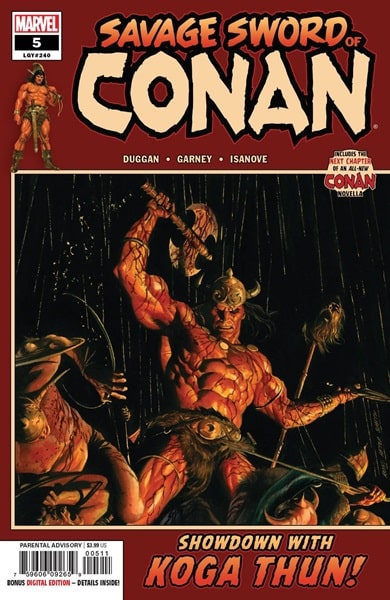 |
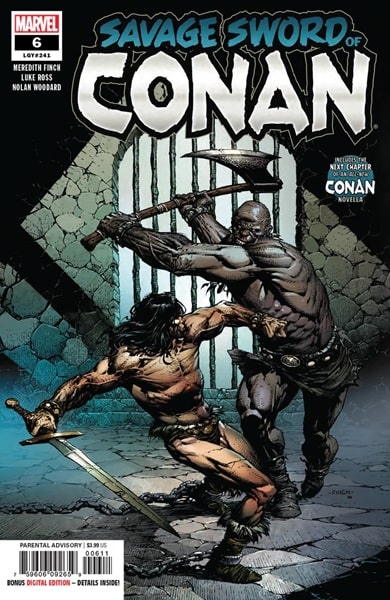 |
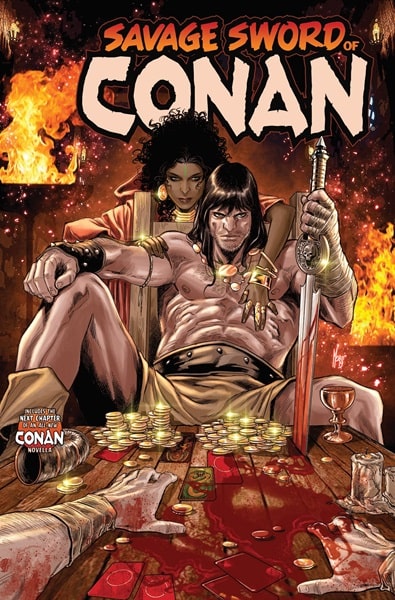 |
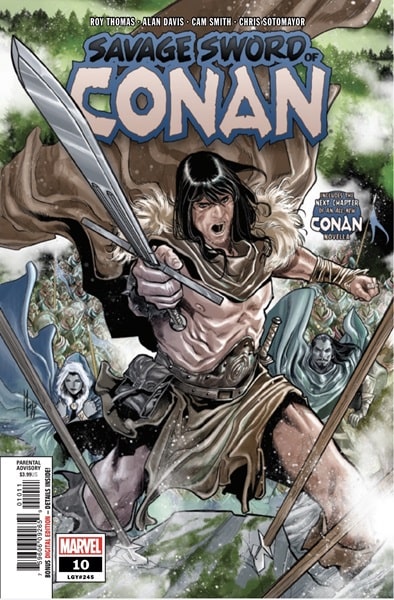 |
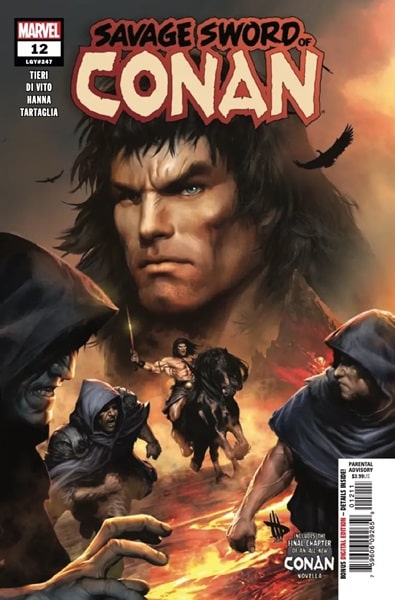 |
Marvel’s Savage Sword of Conan comic, containing the
serialized installments of “The Shadow of Vengeance”
This sort of double plot: Conan has a scheme, and unfortunately there is a counter plot in his way — possibly because of something he’s previously done — is classic Howard, and frankly, I’ll just say it; this is a better story than “The Devil in Iron,” while pulling a few threads from it, including a similar sort of magical threat at the end. The story is a long novelette, as Howard himself often wrote, which also allows for a richer plot, more characters and plot twists. (It also was a requirement: Oden originally wrote this as a serial for 12 issues of Marvel’s rebooted Savage Sword of Conan, each chapter appearing in an issue, but the story never feels padded.)
My only complaint is that, while drawn into a major plot hook, Olivia herself promptly disappears from the story and then pops in again at the end. While far from a Belit or Valeria, the strong warrior women Howard introduced, she’s a fun character and it might have been nice if she’d had a bit more to do than run afoul of sorcery to advance the plot.
Nevertheless, this is hands down the best of the new fiction Titan has released to date, and one of the best pieces of Conan pastiche, ever. It feels like it fits in his chronology, has a story worth telling, and was written by the original author. What more can you ask?
Suggestion to Titan: If you are going to launch your novella/novel projects, tap Oden.
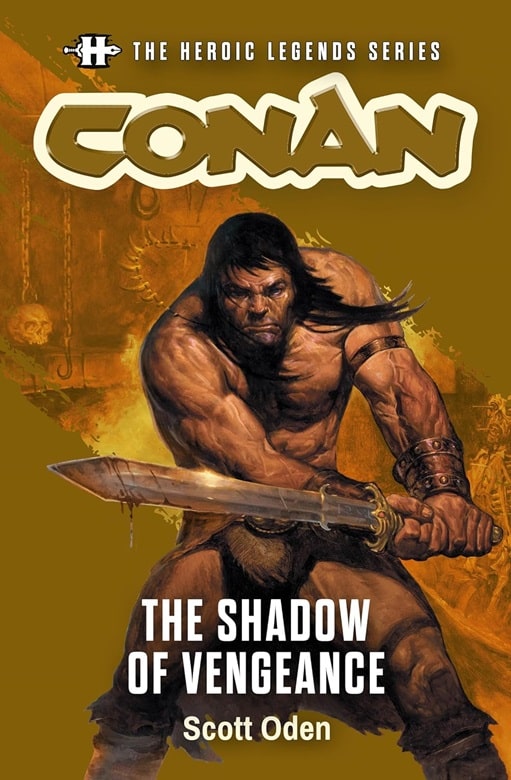
I’ve said it before (years ago) and I’ll say it again; Scott Oden should be THE premier author for any future Conan novels. Not necessarily the only one, but certainly the most capable. I believe it’s his deep love and appreciation for ancient history that helps elevate his writing to the very highest quality. That, and his intense appreciation of Howard’s unique prose and storytelling power gives him a special one-two punch that most pastiche writers lack. Scott MUST be tapped to write a new novel that tells the story of how Conan wrested the bloody crown of Aquilonia from the cruel King Numedides and placed on his own brow!
100% Hocking’s novel was great and the long-awaited sequel should be excellent; but Scott gets HOWARD because he’s driven by the same thing. In the end, Howard wasn’t a fantasy nerd, he was an adventure fiction nerd driven by the historicals of Lamb and Sabatini and the adventure stories of Jack London, and his Hyborian Age, strange mish-mash that it is, works because he always believes in whatever part of that world he’s writing in. In the same vein, Oden gets that idea, he gets what makes Turan, Turan and not Stygia and why, AND he can sound like REH while doing it.
Yes, just yes!
I’ve been a REH for over 40 years. Read anything Howard related I could get my hands on to include most all of the pastiches. Scott Oden is the best so far. I don’t think even the best authors who did a great job writing Conan, come close to how awesome a job Mr. Oden did.
Right from the beginning of Shadow of Vengeance , it was if Howard was still alive in 2024 and writing another Conan yarn.
I do want to mention Titan is doing such an awesome job with their Heroic Legend Series to include their Conan the Barbarian comics. The whole company is on board and “get” REH and shines through in these publications. These are the stories I’ve been waiting to read ever since I started reading Robert E Howard and Conan back when I was a teen-ager.
From one Greg to another — just so. I was enjoying the Black Stone storyline more until the recent Thulsa Doom Meets Evil Dead vibe…I feel like they could have interspersed some other stories before linking everything to this one recurring tale, but it’s still far better than the Marvel reboot and Titan is definitely putting energy and effort into the brand. Is it all working? No, but that’s OK. I am anxious to see the new Bran Mak Morn story next month and will curious to see if they put more effort into short novels/novellas.
As much as I do love Shadow of Vengence like it is. I was pointing out how Scott Oden capture Howards voice and adapts it to modern language.